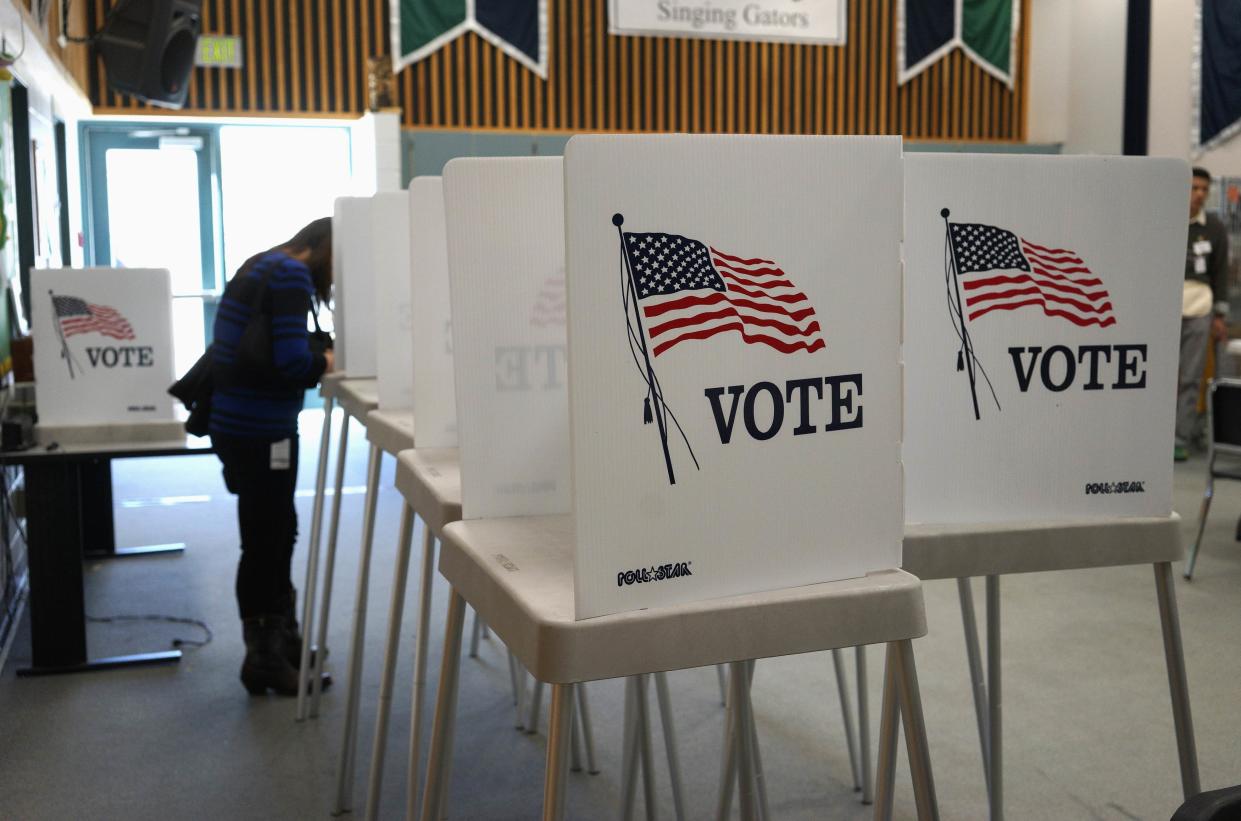 David vs. David
David vs. DavidElection reform: Complaints about money and electoral districts are for 'losers'

There is that old maxim, “Where you stand is where you sit.”
And the cry for election “reform” is invariably the province of losers.
Winners are essentially satisfied with the system as it is working for them. Or, if they didn’t win the most recent election, they view the system as sufficiently congenial that they have a reasonable chance of winning. They view the day of electoral defeat as the first day of the march to victory (just as astute victors/parties recognize the day of victory is the first day in the march to defeat). And losers can be sanguine. Democrat Moe Udall was cited after the 2000 election, “the people have spoken; God damn them.”
So despite the undeleted Udall expletive, Democrats were confident they could rebound—as they did in 2008 by electing Barack Obama as president. And, historically, there has been no significant, enduring, modern third party movement, other than ivory tower theorizing about proportional representation.
So those that complain about the play of the rules are invariably losers who are not sufficiently convincing to persuade the electorate to endorse them for office.
Minorities and Money
During the past generation, there have been two major topics of political debate: construction of election boundaries and the amount of money spent on an election.
The first argument arose from substantially disproportionate numbers of voters in some electoral districts: Rural areas with fewer voters essentially had greater representation than urban/suburban areas. Ultimately addressed by the Supreme Court, the court decided electoral districts had to have very close to the same number of voters.
Progress?
Well, yes and no. The advent of skilled computer experts permitted drawing voting districts adhering to the requirement for rough population equality while still resulting in many frequently uncompetitive congressional districts. These battles were fought by state commissions making control of the state machinery even more important than it was before.
Opposing view:
Election reform: Canada in desperate need of proportional representation
A subordinate issue was minority representation, a topic that was contested state by state. Currently 43 African-Americans serve in the House of Representatives (9.8 percent of the House while African Americans are 13 percent of the population). One might conclude the problem has been largely resolved.
The second issue has been money. One-time California assembly man Jesse Unruh is attributed as saying in 1963, “Money is the mother’s milk of politics.” Of course, he could have said that “money is the mother’s milk of everything” and not been wrong, too. And, to be sure, politics has become increasingly expensive. The Federal Election Commission totaled all expenditures for the 2014 elections at more than $3.7 billion--certainly not a trivial sum. But before one expires like Aunt Mathilda from the “vapors,” some perspective is useful.
Hey Big Spender
The top 100 U.S. advertisers spent $109 billion in 2013 to advance their products: Unsurprisingly, automobiles (GM $2.15 billion and Ford $2.56 billion) and electronics (AT&T $2.91 billion and Comcast $3.08 billion) were major advertisers. But Proctor & Gamble topped the list, having spent $5 billion—who would have thought soap needed so much promotion? And a 30-second, 2015 Super Bowl advertisement cost $4.5 million. That’s an average of $150,000 per second.
Both Democrats and Republicans have billionaires in their ranks, willing to throw dollars in all directions to advance their causes. But those disconcerted by the notion of “buying an election” might take comfort in reality checks such as the effort by Stephen Forbes. He spent approximately $32 million of his own money in the 2000 campaign, on top of $37.4 million he spent on his failed 1996 effort. The result was two-to-19 Republican delegates and no primary victories. This ineptitude matched Ross Perot, the Texas businessman who spent almost $71 million on his 1992 and 1996 Reform Party bids.
Nor is there any likelihood of change. The Supreme Court has ruled essentially that dollars are speech; we do not limit speech, and we do not limit campaign spending. The alternative, that a candidate can accept federal funding if (s)he does not use other funding sources, has proved unattractive. Indeed, the Internal Revenue Service tax payment form has a “check off” box for one or two taxpayers to divert $3 each to presidential campaign funding. Checking the box doesn’t increase individual taxes, but participation has dropped from inception (29 percent in 1977) to the present (6 percent in 2013).
U.S. citizens want to determine personally the use of campaign contributions.
Until we start putting bags over the heads of photogenic candidates to even the playing field, let the dollars roll in.
David T. Jones is a retired State Department Senior Foreign Service Career Officer who has published several hundred books, articles, columns, and reviews on U.S. - Canadian bilateral issues and general foreign policy. During a career that spanned over 30 years, he concentrated on politico-military issues, serving as advisor for two Army Chiefs of Staff. He has just published Alternative North Americas: What Canada and the United States Can Learn from Each Other.



